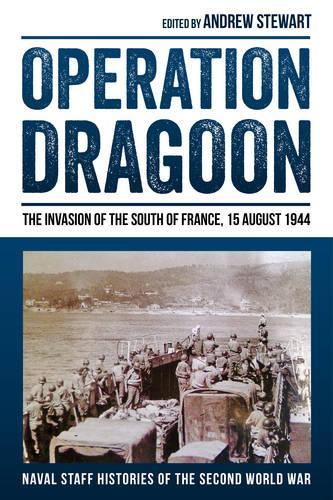
Operation Dragoon: The Invasion of the South of France, 15 August 1944
(Hardback)
Publishing Details
Operation Dragoon: The Invasion of the South of France, 15 August 1944
By (Author) Andrew Stewart
Helion & Company
Helion & Company
19th November 2015
15th November 2015
United Kingdom
Classifications
General
Non Fiction
Modern warfare
European history
Battles / military campaigns
940.542148
Physical Properties
Hardback
128
Width 152mm, Height 229mm
Description
The Allied landings that took place in Southern France in August 1944 represented both one of the concluding elements of the wartime Mediterranean campaign and a decisive follow-on to the invasion of Normandy that had taken place two months before. It was viewed by many at the time as something of a sideshow and not a significant part of the wider war effort. Considerable controversy surrounded the planning of what was originally known as ANVIL with the senior Allied political and military leaders heatedly debating the strategic rationale for such an operation. The maritime force of escort carriers, a gun support force, minesweepers, cargo vessels and heavy landing craft was commanded by an American admiral but a third of it was supplied by the Royal Navy. On the day of the landings the British cruiser HMS Argonaut fired the most rounds of any ship in the fleet. An overwhelming superiority in airpower and a lack of a cohesive German response meant that the landings were an overwhelming success. By the third day the Allies held a 50-mile front as much as 30 miles deep, a total of some 500 square miles. At least nine important towns were in Allied hands and spearheads were ten miles from the naval base of Toulon, ten miles from Cannes. Seaborne and airborne troops had met ashore and reinforcements and supplies were being landed in large quantities. As this Naval Staff History highlights even so "The Champagne Campaign", as it was later termed by many of those who had been involved, required considerable planning and the contribution provided by the Royal Navy had a significant part to in the final Allied success. With this came the capture of intact French ports and the establishment of a vital logistic hub would help safeguard the Allied drive through North-Western Europe. This is the second volume in Helion's new series, 'Naval Staff Histories of the Second World War'. The series aims to make available to a broad authorship these indispensable studies of the key operations of the war. 4 colour & b/w maps
Reviews
" ... for historians interested in the operations they cover, while for those who possess copies of the originals they are of value because of the added insight they offer."-- "Warship"
Author Bio
Since the autumn of 2002 Andrew Stewart has been a member of the Defence Studies Department, King's College London, the academic component of the United Kingdom's Joint Services Command and Staff College (JSCSC) where he teaches military officers. Previously he completed his doctorate which examined diplomacy during the Second World War and worked in a geopolitical risk consultancy. He has since taught a range of subjects, both regional and security orientated, and currently is one of three historians supporting the Higher Command and Staff Course. In this role he gives lectures and leads seminars on conflict-related historical and contemporary issues. He has authored numerous books, chapters and academic articles and recently completed a new book on the D-Day landings which examines the controversy that surrounding the assault on the Sword sector. In September 2014 he will be appointed as a Reader in Conflict and Diplomacy within the Defence Studies Department.
